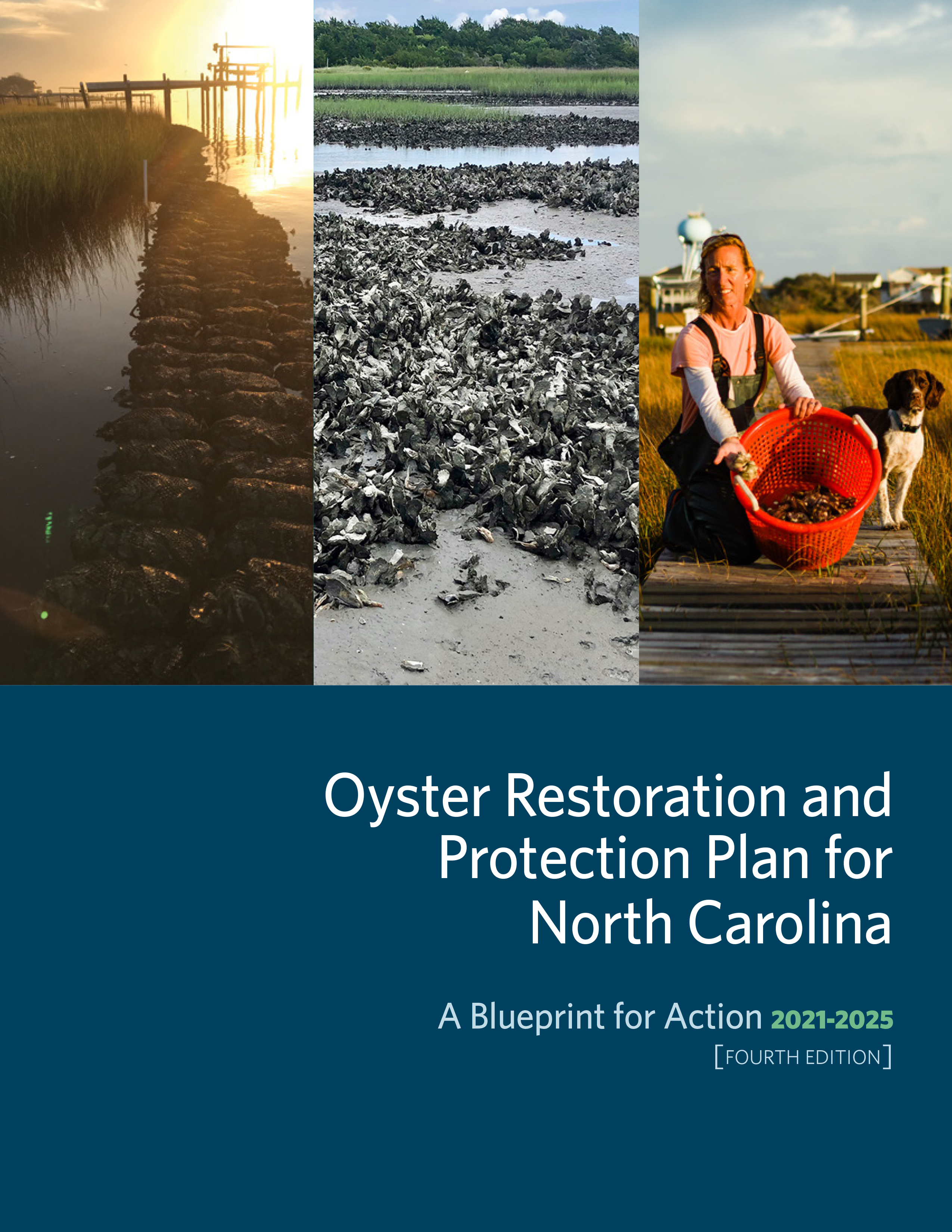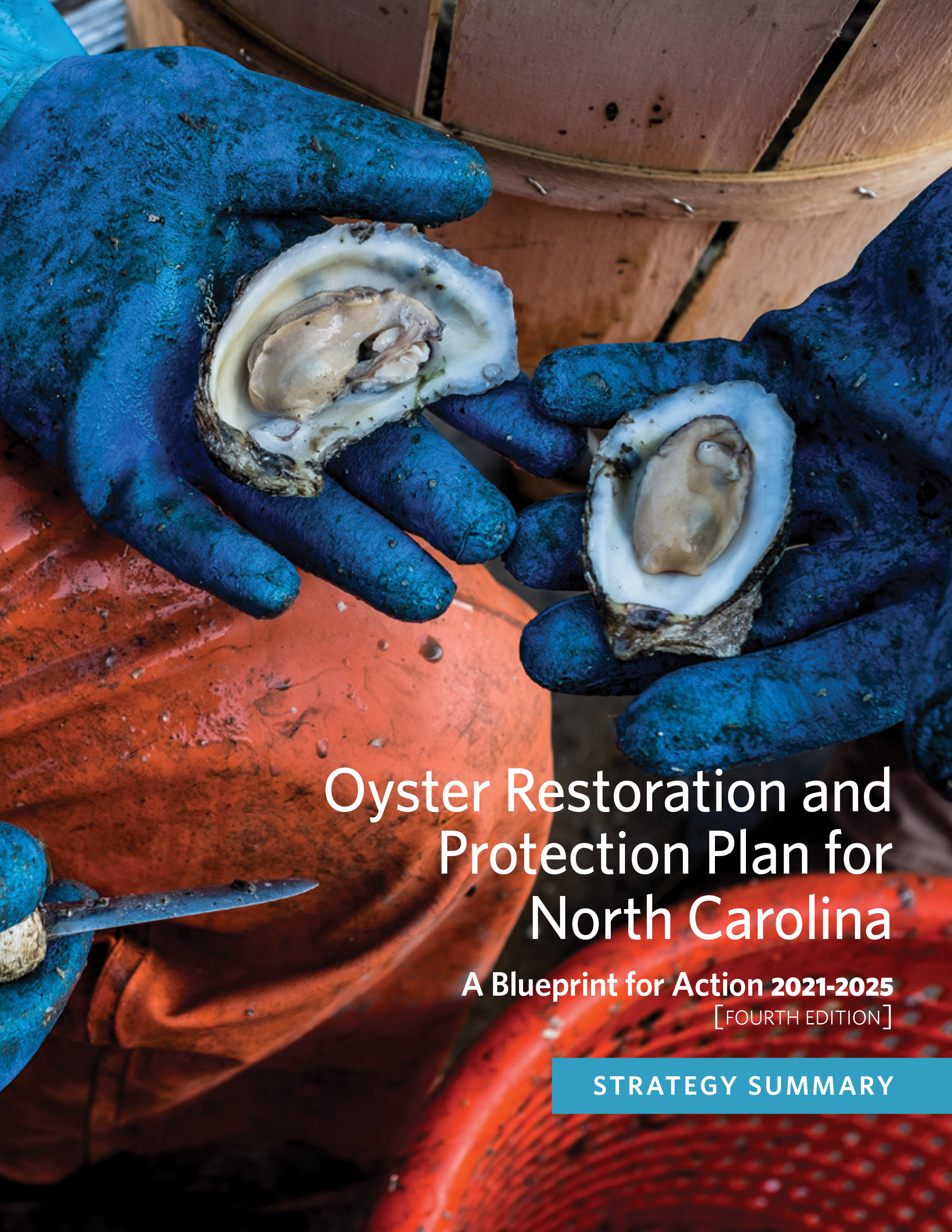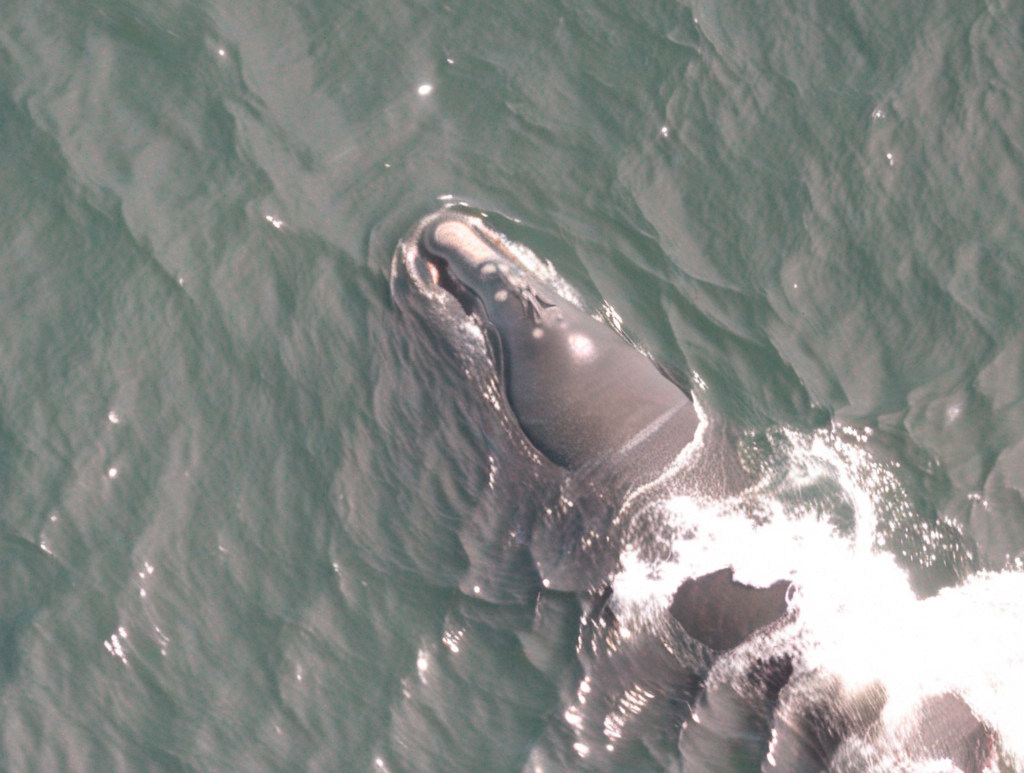New Blueprint for NC Oyster Restoration and Protection
Today, the North Carolina Coastal Federation released the North Carolina Oyster Blueprint for 2021-2025, an action strategy created by more than 50 contributors across the state to advance restoration, protection and harvest of oysters. This is the fourth edition of the Blueprint, which was first issued in 2003.

“Our ambitious vision for oysters in North Carolina builds on the Oyster Blueprint’s solid foundation of successes, and reflects that forward progress,” said Todd Miller, executive director of the North Carolina Coastal Federation. “I’m especially proud of the commitment, cooperation, and creative thinking the many diverse contributors showed in creating this vital plan, even as COVID-19 added new challenges in the last year.”
North Carolina Sea Grant served as a key partner during development of the new Blueprint, continuing the program’s long history of support and work aligned with past and present versions of blueprints.
“Several North Carolina Sea Grant extension team members contributed to workgroups that devised the strategies,” says Frank López, North Carolina Sea Grant’s extension director. Sea Grant also has funded a variety of research projects aligned with the blueprint goals.
Restoring oysters is one of the most promising opportunities for coastal states, offering benefits for water quality, fish habitat and shoreline protection from storms. Restoring wild oyster populations can also increase the commercial oyster harvest and help oyster farmers who grow their own, contributing jobs and healthy, local food to the state.
Wild oyster populations in North Carolina have declined over the last century due to historic over harvest and the subsequent impacts of poor water quality, natural disasters, predation, and disease, mirroring the global loss of an estimated 85 percent of oyster reefs. Although there is no current stock assessment for the wild oyster population in the state, the Division of Marine Fisheries views it as particularly vulnerable to overfishing.

The Oyster Blueprint identifies specific goals for the state and key areas within it to achieve by 2025, including:
- Improve water quality in the Newport River and Stump Sound to protect and restore these highly productive, but very endangered shellfish growing waters;
- Build an additional 100 acres of oyster sanctuary in Pamlico Sound, and determine the intent and need for sanctuaries, or an alternate protected reef method, in the southern shellfish waters of the state;
- Create a cohesive oyster shell recycling program along the coast of North Carolina and in specific inland areas to provide 5% of material needed to support oyster habitat restoration projects, and identify priority reef projects to build with recycled shell, with a target to build 20 acres of new reef;
- Build 200 acres of oyster cultch reef to support wild harvest, and study the existing cultch planting program to determine if improvements can be made to maximize oyster growth on these reefs and the return on investment.
- Grow shellfish aquaculture to a $45 million industry by 2025;
- Expand the use of living shorelines so it becomes the most commonly used shoreline stabilization method in estuaries that support oyster habitats, and ensure that living shorelines, which incorporate oyster reef materials, are protected from future harvest.
“This report reflects the shared vision of many diverse partners,” says Erin Fleckenstein, coastal scientist and regional manager for North Carolina Coastal Federation, and leader of the Oyster Blueprint effort. “One of the great strengths of the Oyster Blueprint is that the very people who together develop this plan are the same ones who will carry it out, with support from state agencies and organizations.”
Stakeholders, agencies and organizations that contributed to the blueprint included commercial and recreational fishers, shellfish farmers, state and federal environmental and economic development agencies, scientists, tourism officials, restaurant owners, seafood dealers and environmental nonprofits.
“The latest version of the Blueprint documents the progress and the potential of the oyster industry in North Carolina,” Sen. Norman Sanderson says. “It’s clear that the investments we have made to help the aquaculture industry are paying off. We need to continue to build on that success to create the jobs shellfish can bring to our coastal communities.”
Previous editions of the Oyster Blueprint have led to important improvements in the state, including:
- Increasing funding for oyster related programs by a factor of ten from 2003-2013;
- Documenting that for each dollar invested, at least $4.05 in benefits are realized;
- Restoring nearly 450 acres of oyster habitat for both environmental benefits and harvest opportunities;
- Growing the shellfish aquaculture industry from $1M to $5 M and increased the number of farms in the state tenfold;
- Documenting a doubling of annual oyster harvest from a low of 42,322 bushels in 2003to 96,258 bushels in 2013; and
- Fostering the protection and restoration of the state’s water quality to allow for the safe growing and harvesting of oysters, as well as the continued recreational enjoyment of the coast.
Many of the actions identified in the Oyster Blueprint are already underway, supported by funding from a combination of sources including state appropriations, state and federal grants, and private foundations. A statewide Oyster Steering committee facilitates and coordinates for the many who help implement the plan.
“We’ve known for some time that oysters can be a big win for our environment and our coastal economy,” Rep. Pat McElraft says. “The Blueprint is a great map for us to follow to build on the success we have already achieved with oysters in North Carolina.”
North Carolinians can support the work of the Blueprint in a variety of ways, including by recycling oyster shell for use in oyster restoration, volunteering with organizations to build new oyster habitat, visiting an Oyster Trail site to support businesses that promote oysters and tourism experiences, following social media accounts and sharing posts that promote the Blueprint, and participating in the Coastal Federation’s Adopt an Oyster program to support restoration efforts.
For more information or to get involved, please contact Erin Fleckenstein or Leslie Vegas with the North Carolina Coastal Federation: 252 393-8185 or email info@ncoysters.org.
Read the full-length version of The Blueprint.
Read the Strategic Summary of The Blueprint.
A few of North Carolina Sea Grant’s recent partnerships on work aligned with The Blueprint
Spat-On-Shell Demonstration Project Will Benefit Oyster Harvests and Coastal Ecosystems
New Mapping Tool Identifies Sites for Re-establishing Oyster Reefs
Farming Coastal Waters: Applied Research Supports Oyster Growers
Drones Deliver Data on Oyster Reef Health
An overview of earlier North Carolina Sea Grant Oyster initiatives and sponsored research
Related Resources from North Carolina Sea Grant
North Carolina Cultured Shellfish: An Overview
Careers in Mariculture (video)
More on Coastal and Marine Aquaculture
A Primer on North Carolina’s Seafood
- Categories:


